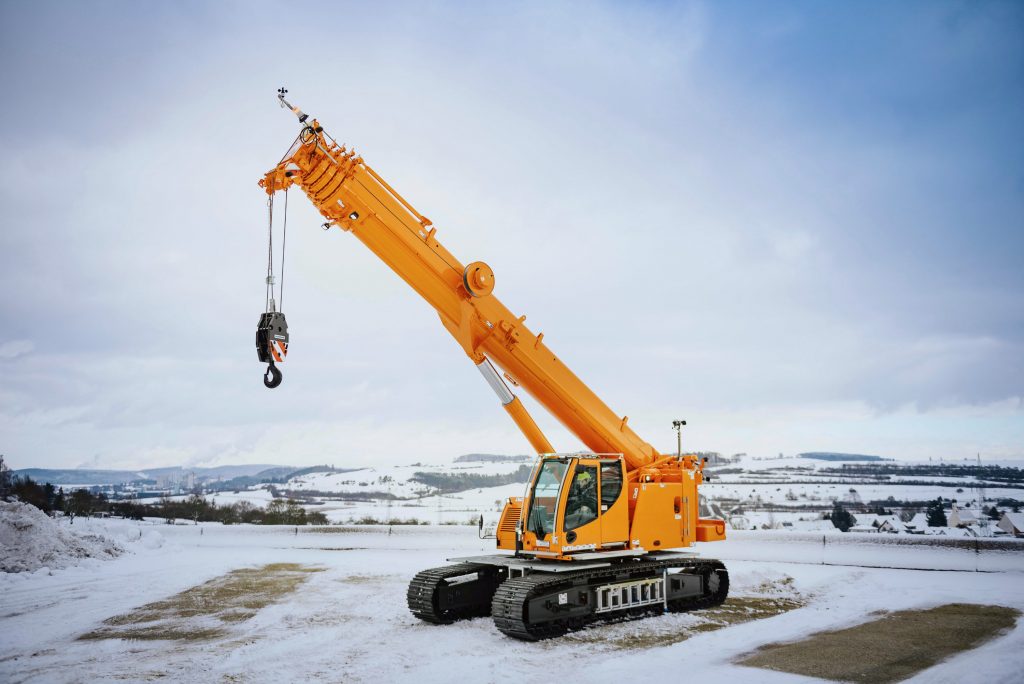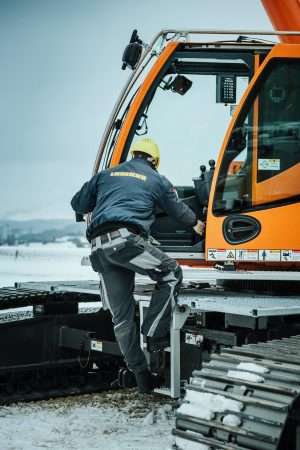
News
Products & Equipment
Cranes
Liebherr adds LTR 1040 to its telescopic crawler crane series
May 13, 2021 By Todd Humber
 The Liebherr LTR 1040. Photo: Liebherr
The Liebherr LTR 1040. Photo: Liebherr Liebherr is following the “wishes of its customers” by adding a lightweight version of its 60-tonne LTR 1060 telescopic crawler crane with the LTR 1040.
“As many projects and tenders call for telescopic crawler cranes in the 40 tonne class, Liebherr extended its … portfolio downwards,” the company said in a press release. “Contractors can upgrade the LTR 1040 to make it into an LTR 1060 retrospectively if required.”
The main difference to the LTR 1060 is the significantly reduced ballast. The 1040 weighs 20 tonnes less — 10 tonnes of central ballast have been taken off the chassis while a further 10 tonnes of counterweights have been removed from the slewing platform. As a result, most crane jobs can be carried out without a folding jib, Liebherr said.
Long, powerful telescopic boom
High lifting capabilities are particularly important for assembling prefabricated components, one of the main areas of work for telescopic crawler cranes. For example, the LTR 1040 will hoist up to 8.6 tonnes with a radius of 10 metres throughout its entire 360-degree operating range.
When it is fully raised, the lifting capacity of the 30.7 metre extended telescope is 18.8 tonnes and when fully extended, the 40 metre-boom can hoist 10 tonnes.
Using a 16-metre double folding jib, the LTR 1040 can achieve a maximum hoist height of 55 metres and can hoist a weight of 3.1 tonnes in this configuration.
Transport, set up
The LTR 1040 can be transported economically as it weights “just 43.5 tonnes,” Liebherr said. That includes the 5.6 tonnes of ballast.
The axle loads for transport are less than 10 tonnes for a three-axle tractor unit and a four-axle semi low loader. By removing five tonnes of ballast, the LTR 1040’s weight can be reduced to 38.5 tonnes, which means it has a gross transport weight of less than 60 tonnes.
The crawler travel gear is retracted to a width of three metres for transport. The low crane height of 3.15 metres ensures that “economical standard semi low loaders can be used,” it said.
Assembling prefabricated components
The construction and design mean the LTR 1040 is a good choice for assembling prefabricated components. With a 2.5 metre erection jib and a second hoist unit, it can also carry out work in two-hook mode.
The load absorbed with the erection jib by the low loader is transferred to the second hook on the telescopic boom. This means that prefabricated components can be rotated into the correct position and move to the installation site on the crawler travel gear.
It can hoist up to 17.7 tonnes with four-line reeving of the hook block on the erection jib. The runner on the LTR 1040 can handle loads of up to nine tonnes as it can also use a double reeving constellation.

Accessing the cab of the LTR 1040. Photo: Liebherr
Safety
Being able to travel with the full load on the hook is a major benefit of crawler cranes. To exploit this feature to the full, Liebherr provides lifting capacity tables for various ground inclines.
The fine gradation of up to 0.3, 0.7, 1.5, 2.5 and 4 degrees ensures perfect lifting capacities even on uneven site terrain types. On constricted sites, the LTR 1040 can also operate with its crawler tracks retracted to a width of three metres. Special lifting capacity tables are provided for this type of operation.
The crane cab itself has been designed to be “particularly safe and convenient,” Liebherr said.
The crane operator can access his workplace in any slewing platform setting using folding ladders, a fixed platform on the crawler track and an extra-wide step on the cab.
“There is no need to climb over the crawler tracks and chains,” it said. “This means that the LTR 1040 already meets the highest safety standards of the future which will come into force when the new EN13000 revision is enacted over the next few years.”
Print this page